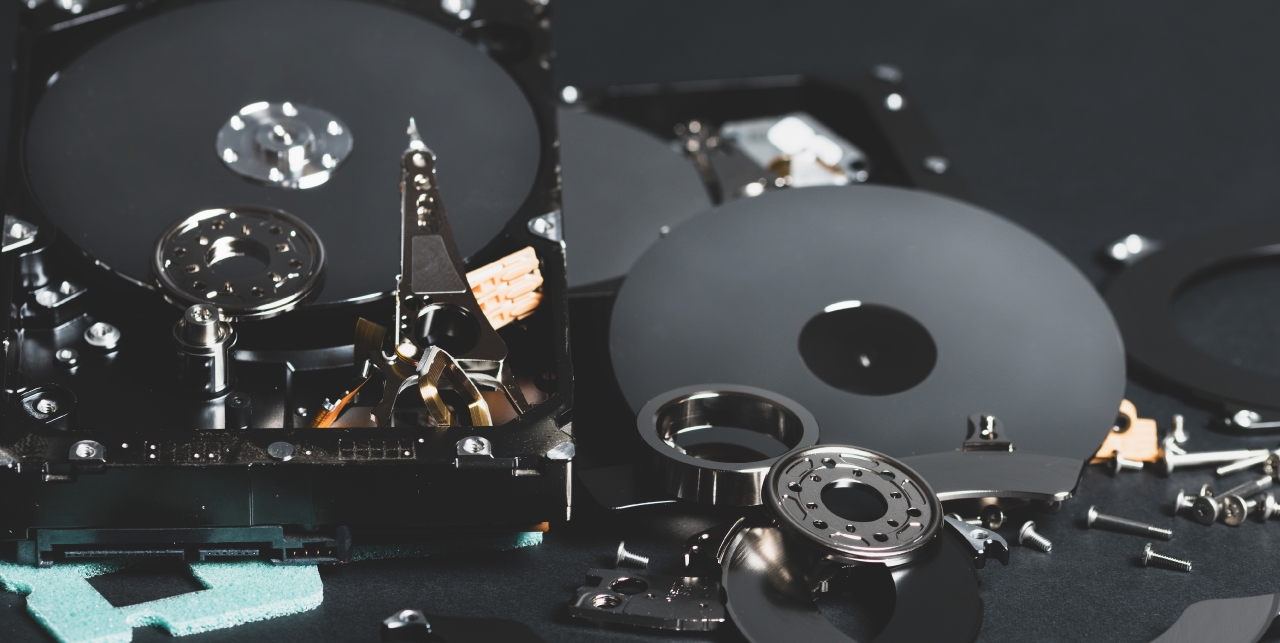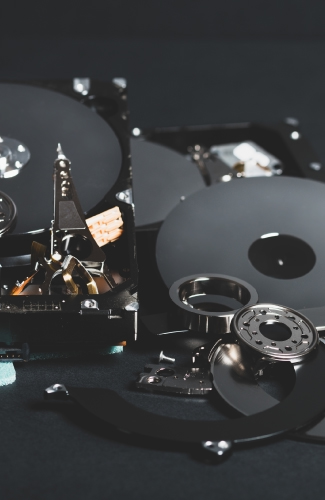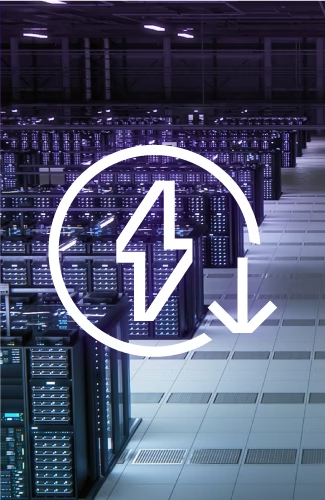Legacy Is a Good Place for Disk Drives


There’s been quite a lot of innovation in IT storage media over the years. My own journey, like many of us in the field, is a long one. It started with something like magnetic tape, moved to hard disk drives (HDDs) and then flash-based solid-state drives (SSDs). The technical attributes of any storage media are ultimately what help to drive IT adoption. There are several factors which make any storage media a market success, but the underlying technology, and how it is accessed, is essential. Let's take a look at a few technical characteristics of storage media that matter to IT.

1. Storage capacity
The amount of space that is available needs to match or exceed the data footprint. This can be pure physical or raw storage capacity, or simply what the device presents to the OS or storage system. Compression and other data reduction techniques allow “logical” capacity to exceed physical capacity. Data protection can have the opposite effect, reducing logical capacity due to the need for redundancy to protect customer data from media failure.
2. Storage performance
Many times the impact of storage performance is overlooked when considering the overall speed of the deployment. For most use cases speed is typically measured as time to first data, also known as access time, latency, or response time. This can be sustained drive throughput or the amount of time between active accesses. Similar metrics exist for writing data around when the data is persistent, the most valuable part of storage.
3. Storage energy requirements
All storage requires power to do active work. It's typically measured at idle and during read/write I/O workloads. As compute used for AI (CPU and GPU) consume more of a data center’s energy budget, IT has had to get creative with power used by other parts of the infrastructure.
4. Storage reliability
When data is written to storage it must be able to be read back. There are several measurements that are accepted today that include bit error rate (BER) and mean time between failure (MTBF). Some additional HDD and SSD specific features now include drive writes per day (DWPD) and total bytes written (TBW) to represent storage longevity.
IT storage media
There have been many transitions in the primary data center storage solutions over the years. What started with punch cards moved to tape, then to HDD, and now SSD. It’s the transition from HDDs to SSDs that’s remaking the enterprise storage market today.

Tape-base storage solutions
The era of data center storage started primarily with tape-based solutions. Tape died away in favor of HDDs with the advent of the first room-sized solutions. HDD went on to dominate the enterprise storage media market in partnership with tape for decades afterwards.
Interestingly, tape was all but pronounced dead in the 70s and 80s. However, tape is still being used for a significant amount of archived data, known as “cold” or “frozen” storage. It exists for use in cloud and/or HPC shops that still have need of the exabytes (EBs) to yottabytes (YBs) of data that persist in the world today.
To understand this, a discussion on the unique abilities of these different storage solutions seems in order. First off, there is a need to view the basics of tape, HDD, and SSD in a somewhat unique way.
Some characteristics of tape that caused its decline include:
- Tape access method limitations: Currently shipping, LTO9 tape throughput is ~160 MB/sec (raw, off the tape).
- Increasing tape capacity is challenging: LTO9 currently supports 18TB (raw)/cartridge for 1 km long tape, with ~9K tracks, which is roughly an areal density of 12 Gbpi2 (gigabits per inch squared).1
- Tape technology ecosystem is shrinking: Currently there are only three companies in the LTO consortium, IBM, HP Enterprise and Quantum, developing new LTO technology. And only Fujifilm and Sony make LTO media while IBM manufactures LTO drives.2
Aside from archive use, another reason tape is still used in cloud/HPC data centers is because of its energy consumption and longevity. Essentially, tape uses 0W of power when unmounted and media longevity is >10 yrs.
HDD storage solutions
HDDs are also being relegated to more niche markets. Like tape, similar problems are impacting disk. These are heavily related to moving parts, like spindles, platters, and motors. Even interfaces for HDD are a challenge:
- Disk access methods and interface innovation is lagging: Disk transport protocols have changed over time from Fibre Channel (FC), AT Attachment (ATA), Parallel ATA (PATA) and Serial ATA (SATA), and Serial Attached SCSI (SAS). But most technological innovation happening in interfaces and access methods for AI are passing disk by. Sustained disk throughput is currently around 260 MB/s.3
- Increasing disk capacity is challenging: For spinning disk media, the only way to boost storage capacity and density is to expand the tracks per inch (TPI) per surface. MAMR and HAMR (microwave and heat assisted magnetic recording) heads and ePMR (energy perpendicular magnetic recording) media are future technologies for now. Currently shipping enterprise HDDs use TDMR (two-dimensional magnetic recording) and PMR media. There’s also conventional vs. shingled magnetic recording, CMR vs. SMR. Current 14TB Ultrastar DC HC530 data center (CMR) disk drives support an areal density of 904 Gbpi2.4
- Disk technology ecosystem is shrinking: Again, like tape, only 3 major companies are manufacturing enterprise disk drives today: Seagate, Western Digital, and Toshiba.
Currently HDDs are still shipping large volumes and will continue for some time, but like tape, these are primarily going to hyperscalers and other customers with EBs to YBs of data that requires archiving, rather than active storage.
SSD based storage solutions

Shifting gears, SSDs and the flash technology market are booming, across the board. Why?
New AI low latency access methods and interface protocols target SSDs: As the underlying media in SSDs is semiconductor technology, access can be at electronic speeds and can supply response times in microseconds. Sustained throughput for SSDs is generally 3 GB/sec to 4 GB/sec or more. SSD throughput is a function of the parallelism in a flash IC, the number of flash ICs in a package, and the number of flash packages in an SSD. This allows drive throughput to be increased much easier than for HDD or tape. Learn more about packaging in our article: How Solidigm Drives the Foundation of Innovation in SSD Packaging Technology
Increasing SSD capacities have challenges but are doable: There’s essentially three ways to increase SSD physical capacity, media scaling, package scaling, and bits-per-cell scaling. The first SSDs used single (1) level cell (SLC). Today we see triple (3) TLC and quad (4) QLC devices. Current flash vendors are shipping devices that have been stacked (3D NAND) up to and beyond 200 flash layers per die. Given all its scaling, nailing down Gbpi2 for flash is a moving target but typically SSDs are 15 Gb/mm2 (~9,600 Gbpi2) or higher. And as mentioned earlier, flash can come in more than one IC per package. Solidigm™ D5-P5336 QLC SSD supports 122.88TB of physical storage capacity.
SSD ecosystem is expanding: NAND flash is based on semiconductors and allows for more companies to work on advancing semiconductor technology and drives at least a part of SSD’s ecosystem. While there are several key vendors, 5 and growing, the ecosystem of support organizations is larger as well.
With the fastest access times (microseconds) of any storage media, the highest capacities both total and Gbpi2, the most throughput at >4GB/sec per drive, the lowest energy costs per storage (TB/W), and the fastest expanding technology ecosystem, it is no wonder SSDs are taking over the IT storage market today.
IT application workloads are changing
It’s important to realize that applications are one of the primary drivers of IT storage media adoption. One reason for tape’s fall from data center grace is that applications evolved to start using random access memory (RAM). Before that system, users were required to batch-in/batch out, which drove sequential access. The need for random access created a window of opportunity for HDDs to become the main type of storage. As such, changes in enterprise applications and their access patterns have an outsized impact on IT storage media adoption.
The biggest change to hit enterprise IT applications today is AI. Its emergence over the last decade took many enterprises by surprise but by now, AI adoption is full steam ahead.
AI workloads and data storage
But it’s not just AI deployment that’s driving enterprise application change.5
Some of the key factors include:
- New no-code, low-code and AI assistant code applications are surfacing every day. These new applications demand storage, networking, and processing infrastructure with high performance to work well.
- Ransomware and cyber-security are forcing IT to embrace business continuity and disaster recovery as a newfound religion.
- IoT applications are growing quickly with the advent of edge computing but the energy and footprint/space envelopes for some IoT systems are seriously constrained. Low power, high-capacity SSD storage is a natural fit for IoT applications with onboard data needs.
- Progressive web applications are being developed to speed up user response times. But they also depend on responsive, high performing, high scaling infrastructure to help supply low latency replies to users.
Having low power, faster, and higher capacity SSD storage that can keep up with these trends has become even more vital.
Summary
Storage media transitions happen infrequently in the data center. Sometimes it’s difficult to predict, but the trends can be identified if one looks hard enough.
SSDs have been around for decades. However, unlike previous efforts to make applications stay focused on access patterns, the storage media in SSDs allow AI enterprise access to be tailored for methods/interface protocols to coincide with SSDs, leaving HDDs far behind. Moreover, SSDs’ raw capacity is running away from all other storage media and given SSDs’ low energy use, they are rapidly becoming the storage media of choice for any leading-edge enterprise adopting AI.
Tape still exists ~50 years even after it was pronounced dead. HDDs still exist but we, as an industry, are almost ready to put it on archive life support. SSDs are really the only storage media solution for keeping up with the accelerating pace of application change at the enterprise level, especially as companies shift to incorporate more AI into their data center workloads.
About the Author
Scott Shadley is Director of Leadership Narrative and Evangelist at Solidigm, where his focus is on efforts to drive adoption of new storage technologies, including computational storage, storage-based AI, and post-quantum cryptography. Scott brings over 25 years of experience in the semiconductor and storage space, where he has played a key role in both engineering and customer-focused roles.





